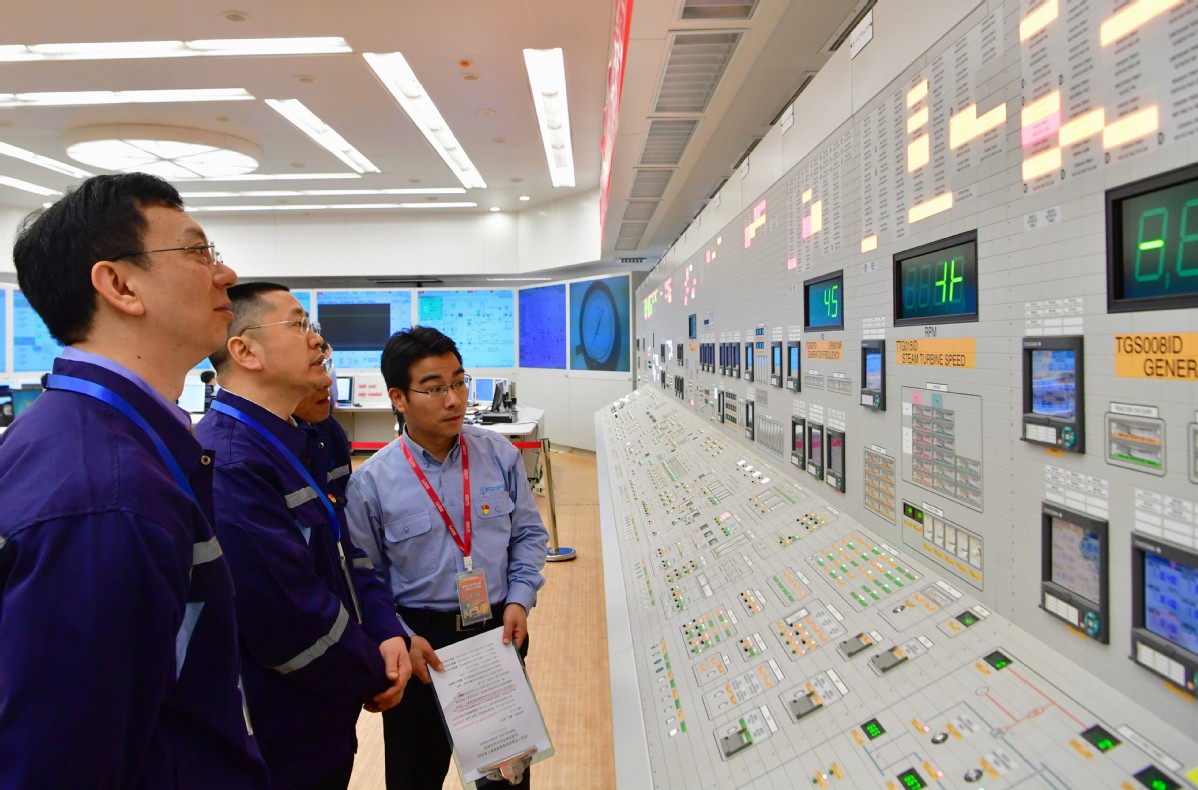Nuclear power efforts gather speed


Third-generation technologies set to keep industry on even keel in nation, say experts
China's growing clean power demand has boosted the rapid development of nuclear power in the country, making it among the few in the world to have independently developed third-generation nuclear power technology, with a complete industry chain, industry experts said.
The first two reactor units using China's homegrown third-generation nuclear reactor technology Hualong One, or the No 5 and 6 reactors in Fuqing Nuclear Power Plant in Fuzhou, Fujian province, are expected to avoid time overruns, creating a record in the construction of the first reactor in a nuclear power project.
Currently, key goals in the construction of the No 5 reactor have all been fulfilled on or ahead of schedule, while devices necessary for the No 6 reactor have been prepared as per schedule, said Zhou Saijun, deputy chief engineer of the power plant affiliated to China National Nuclear Corp, or CNNC.
Hualong One technology, jointly designed by CNNC and China General Nuclear Power Group, adopts a double-layered containment system that can withstand large aircraft attacks, and has a water tank above the reactor that can be gravity-fed to keep the reactor cool.
Fuqing's No 5 reactor will start hot functional tests before Oct 16 and is expected to go into commercial operation in July next year. The No 6 reactor is scheduled to start cold functional tests next April and slated to commence commercial operations in 2021, Zhou said.
Cold functional tests are carried out to confirm whether the circuit system and its supporting facilities are properly installed and ready to operate under high-pressure conditions. A hot functional test is a critical pre-operational test that simulates the temperatures and pressures the reactor systems will be subjected to during normal operation.
The No 2 and 3 nuclear reactors in Karachi, Pakistan, using Hualong One technology, are also making construction progress as per schedule.
Zhu Hongwei, deputy Party chief of the nuclear power plant, said the four reactors are the world's first-ever third-generation pressurized water reactors that are being built without any time overruns.
Zheng Mingguang, president of Shanghai Nuclear Engineering Research and Design Institute Co Ltd, an affiliate of the State Power Investment Corp, said China has accumulated precious experiences and capabilities in nuclear power project design, construction, and operation over the past few decades.
By the end of June, China had 47 reactors in operation with a capacity of about 48.73 million kW, and the nuclear power plants produced about 160 billion kWh of electricity in the first half of 2019, up 23.09 percent year-on-year and accounted for 4.75 percent of the total electricity generated in China, according to the China Nuclear Energy Association.
"We used to lag behind, but thanks to efforts of several generations of researchers, China is now among the few countries in the world to have a comprehensive third-generation nuclear power industrial chain," said Zheng, who is also chief engineer of CAP1400, a third-generation nuclear reactor technology developed by the institute.
China is among the best in the world's nuclear power industry, with distinct competitive advantages to export nuclear power projects, he said.
CAP1400 utilizes proven technologies and takes advantage of superior design features to reduce costs and meet high safety requirements, he said, adding China is able to design and manufacture key equipment and materials.
Over 85 percent of components and devices of CAP1400, including key ones such as steam generators, pressure vessels, accumulators, and squib valves, can be domestically manufactured, thanks to efforts and innovations from both State-owned and private Chinese companies, while the rest can be sourced from multiple foreign suppliers, according to Zheng.
He Yanqing, Party secretary of Shanghai Electric Nuclear Power Group, a leading Chinese nuclear power equipment producer, said huge market demand is the main driving force for the development of nuclear power technologies in China.
Both Zheng and He believe nuclear power will play a larger role in China's green energy mix, as China is committed to reducing carbon emissions and increasing energy accessibility.
Zheng said nuclear energy is the only form of energy that can provide carbon-free and large-scale stable power, compared with other forms of clean energy, such as wind and solar power.
He said nuclear energy could also be a disrupter for energy services in heating, hydrogen, desalination and other new applications in China beyond electricity.
The institute is also working on application of digital technologies within the whole life cycle of a nuclear power plant, combined with artificial intelligence, to maintain and ensure safety and reliability.




































